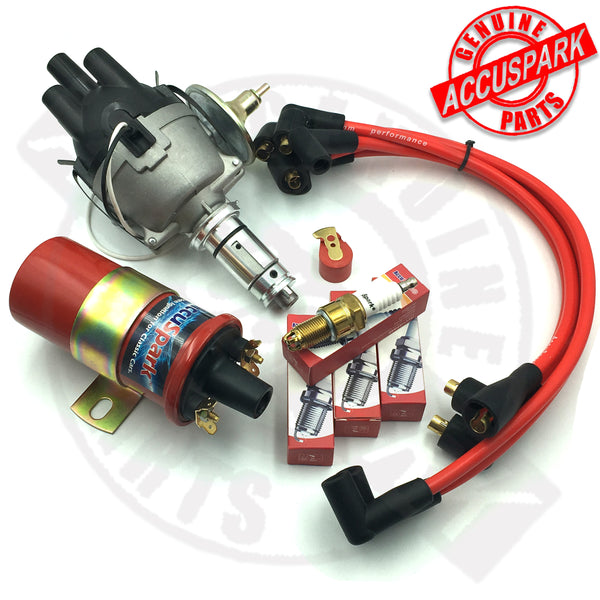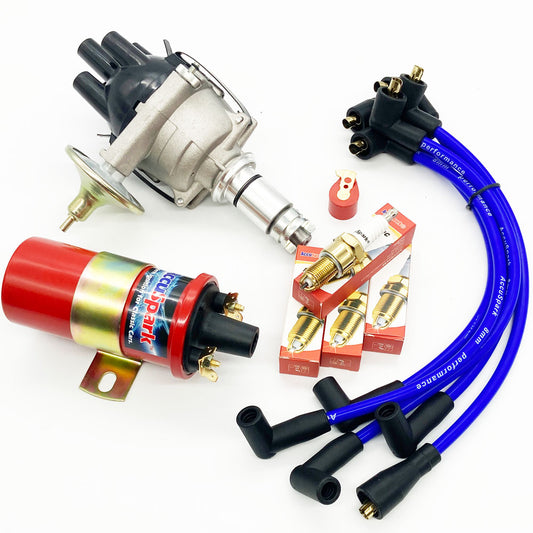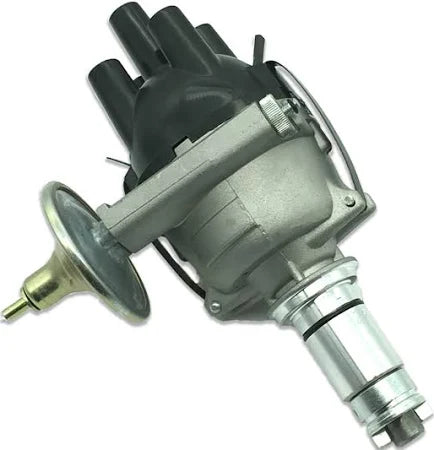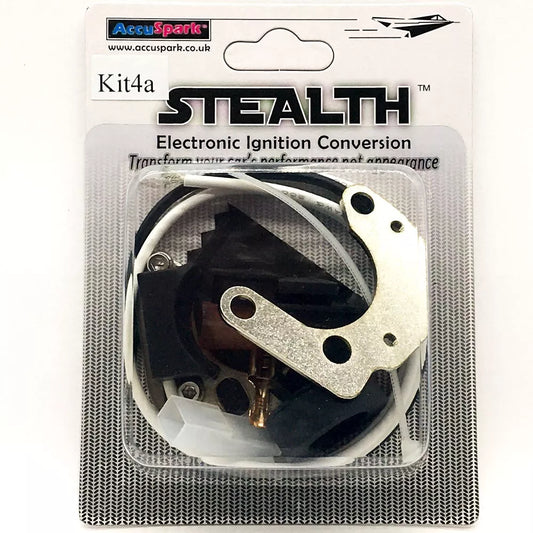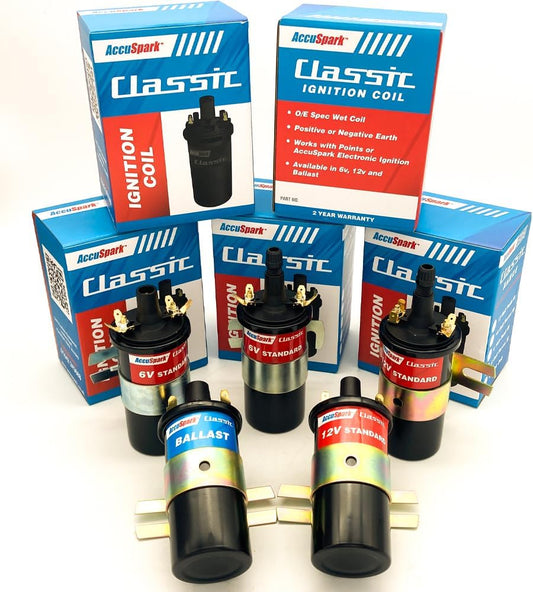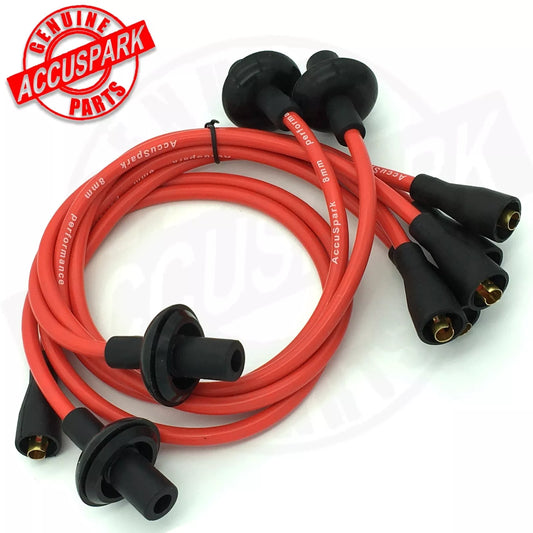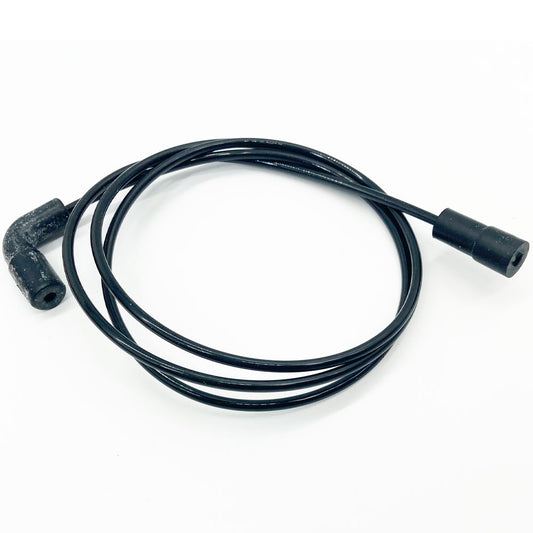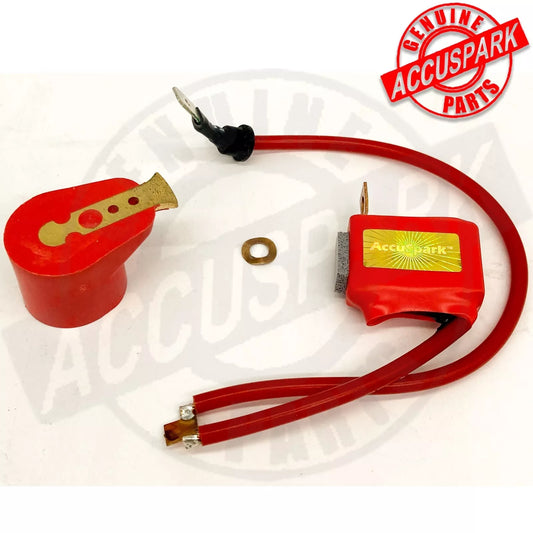Collection: Triumph TR3 and TR4
From the TR3 to the TR4A, Triumph made several incremental improvements to the ignition system, reflecting broader advancements in reliability and drivability:
TR3 (1955–1962): The TR3 used a traditional Lucas coil and distributor-based ignition system, with mechanical points and a condenser. While common for the time, this setup required frequent maintenance—points adjustment, timing checks, and condenser replacements—to ensure consistent spark and performance.
TR4 (1961–1965): The TR4 continued with the same basic Lucas ignition system but benefited from better engine tuning and distributor calibration, leading to smoother ignition timing and slightly improved reliability. The coil and distributor were more robust, and some models received upgraded distributor caps and rotors.
TR4A (1965–1967): The TR4A maintained the Lucas system but featured refinements in ignition timing and dwell angle settings, which were better optimized for the higher compression engine. While still mechanical, the TR4A's ignition system was generally more reliable thanks to improved materials and better factory setup. Additionally, the TR4A’s more advanced wiring and grounding helped reduce ignition-related electrical issues common in earlier models.
Overall, while all three models used similar fundamental ignition technology, each step brought better durability, consistency, and ease of maintenance—though still requiring regular attention by today’s standards.

-
PACK 25D4 POSITIVE EARTH Triumph TR3 TR4 and TR4A Electronic Distributor Pack
Regular price From £120.00 GBPRegular priceUnit price / per -
PACK 25D4 Triumph TR3 TR4 and TR4A Lucas Type Electronic Distributor Pack
Regular price From £115.00 GBPRegular priceUnit price / per -
Distributor 25D4 Lucas type Triumph 4 cyl Models Neg & Pos Earth
Regular price From £75.00 GBPRegular priceUnit price / per -
Kit 4 for Lucas 25D4 and 23D4 Negative Earth
Regular price From £39.95 GBPRegular priceUnit price / per -
Kit 4a for Lucas 25D4 Positive Earth
Regular price £49.95 GBPRegular priceUnit price / per -
Coils AccuSpark ignition coils FULL RANGE
Regular price From £19.95 GBPRegular priceUnit price / per -
Spark Plugs FULL RANGE
Regular price From £2.50 GBPRegular priceUnit price / per -
HT leads AccuSpark silicon 8mm FULL RANGE
Regular price From £14.95 GBPRegular priceUnit price / per -
Vaccum Hose with push fit ends
Regular price £4.95 GBPRegular priceUnit price / per -
Electronic Condensor
Regular price £24.95 GBPRegular priceUnit price / per
